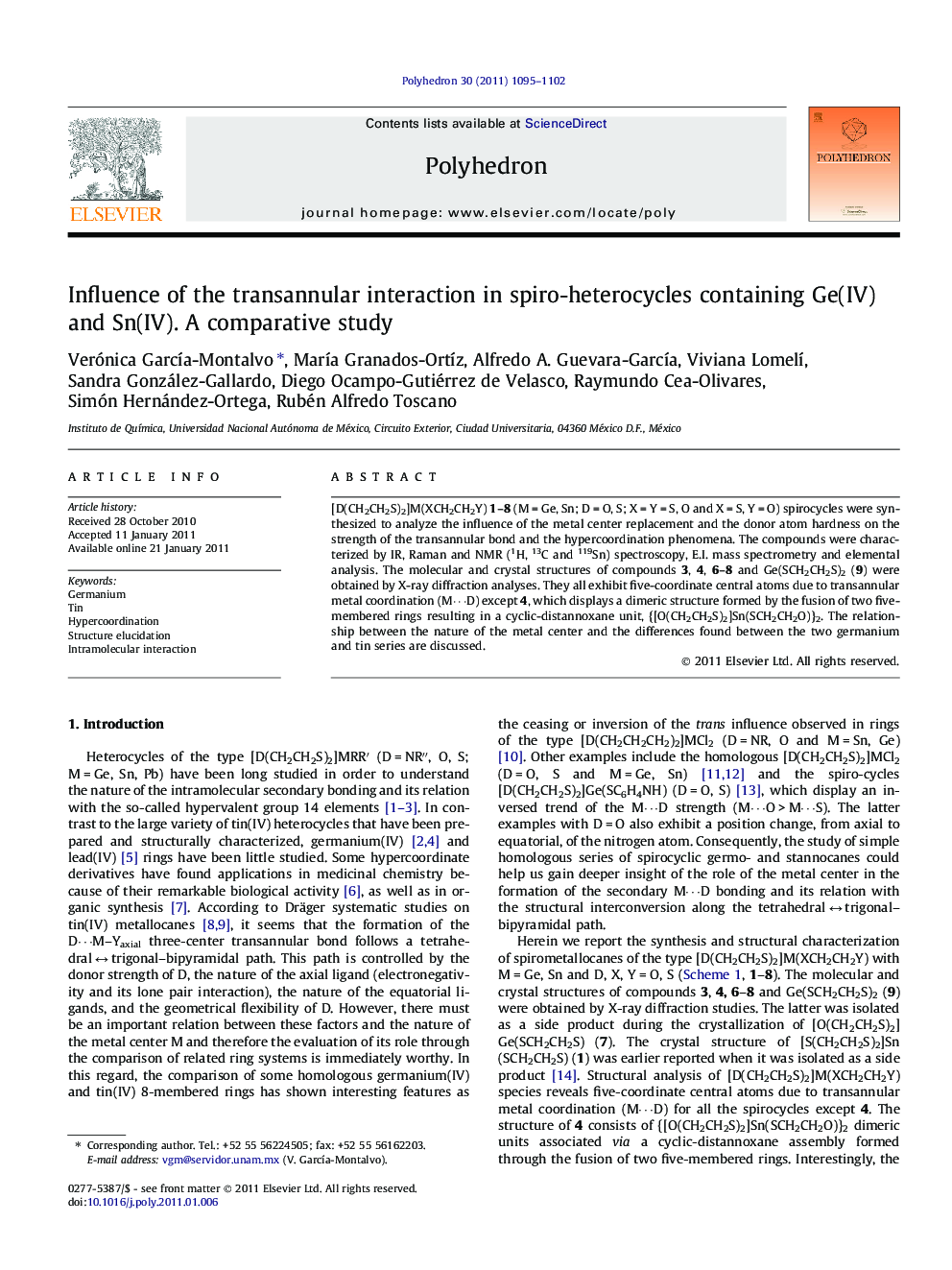| Article ID | Journal | Published Year | Pages | File Type |
|---|---|---|---|---|
| 1338133 | Polyhedron | 2011 | 8 Pages |
[D(CH2CH2S)2]M(XCH2CH2Y) 1–8 (M = Ge, Sn; D = O, S; X = Y = S, O and X = S, Y = O) spirocycles were synthesized to analyze the influence of the metal center replacement and the donor atom hardness on the strength of the transannular bond and the hypercoordination phenomena. The compounds were characterized by IR, Raman and NMR (1H, 13C and 119Sn) spectroscopy, E.I. mass spectrometry and elemental analysis. The molecular and crystal structures of compounds 3, 4, 6–8 and Ge(SCH2CH2S)2 (9) were obtained by X-ray diffraction analyses. They all exhibit five-coordinate central atoms due to transannular metal coordination (M⋯⋯D) except 4, which displays a dimeric structure formed by the fusion of two five-membered rings resulting in a cyclic-distannoxane unit, {[O(CH2CH2S)2]Sn(SCH2CH2O)}2. The relationship between the nature of the metal center and the differences found between the two germanium and tin series are discussed.
Graphical abstractD(CH2CH2S)2M(XCH2CH2Y) 1–8 (M = Ge, Sn; D = O, S; X = Y = S and X = S, Y = O) spirocycles were synthesized to analyze the influence of the nature of the metal center and the hardness of donor atom on the transannular bond and the hypercoordination phenomena. The differences found between the both germanium and tin series are discussed.Figure optionsDownload full-size imageDownload as PowerPoint slideResearch highlights► D(CH2CH2S)2M(XCH2CH2Y) display five-coordinate M due to the transannular bond. ► O(CH2CH2S)2SnSO(CH2)2 (4) forms dimers through the fusion of two five-membered rings. ► The analogous O(CH2CH2S)2GeSO(CH2)2 (8) is monomeric. ► The nature of the donors at M is decisive in the strength of D⋯⋯M–Y bond. ► The Sn⋯⋯D bonds are stronger than Ge⋯⋯D interactions.
